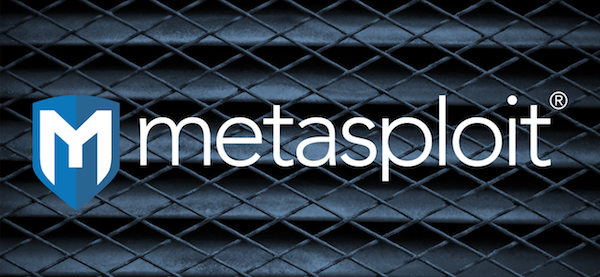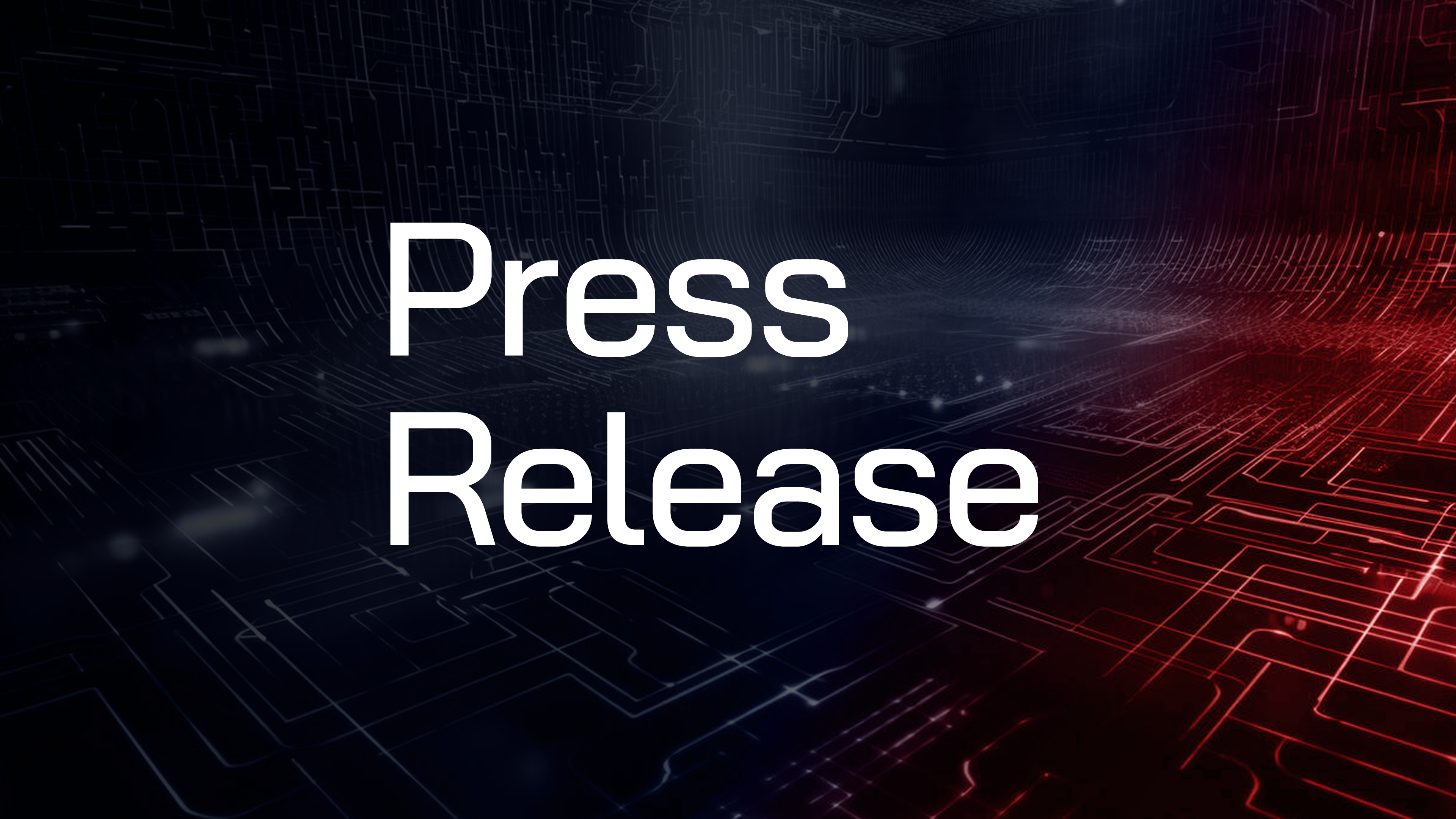Reading view
Microsoft and Proximus Announce Strategic Alliance to Enhance Cloud and AI Solutions

- Communication Platform as a Service (CPaaS) and Digital Identity (DI) Collaboration: The partnership will focus on advancing communication platform services, enabling seamless customer engagement across multiple channels. Proximus Group's expertise in CPaaS and DI, with Telesign and Route Mobile enabled by BICS global networks and coverage will drive innovation in customer communication and security services even further thanks to this partnership. Both organizations will increase their collaboration to make the digital world a safer place, by ensuring trusted communication through Digital Identity and anti-fraud solutions.
- Proximus joining forces with Microsoft for a strategic cloud transformation: Key platforms will be migrated to Azure cloud services, ensuring enhanced scalability, quicker market delivery, and strengthened security. The transformation will accelerate the integration of the newest generative AI technologies in customer service and operations. Additionally, it will provide Proximus engineers with a best-in-class development environment to build innovative products and experiences.
- Enhanced Go-to-Market for Proximus: Microsoft will work closely with Proximus to optimize its go-to-market strategy, empowering Proximus to optimize its reseller role for Microsoft products and services in Belgium. This collaboration will strengthen Proximus' position as a top-tier Microsoft reseller in the region and will benefit all Proximus customers who are also users of Microsoft products and services. Another concrete example of this collaboration: the two partners are already working hand in hand to bring some particularly innovative sovereign cloud solutions to market.
Microsoft and Proximus: Advancing Technology
The collaboration between Microsoft and Proximus underscores their shared commitment to drive technological advancement and deliver unparalleled value to customers across Belgium and abroad. Both companies are enthusiastic about the future possibilities and are eager to shape the technological landscape together. Marijke Schroos, General Manager of Microsoft Belux, stated, “This strategic partnership is a confirmation of the shared vision of Microsoft and Proximus when it comes to leveraging the power of innovation through cloud applications and AI innovation. Our combined strengths will create a true powerhouse of technological innovation to the benefit of our partners, customers and society as a whole.” Guillaume Boutin, CEO of Proximus, shared his excitement: “I'm particularly enthusiastic about this partnership, because when two leading companies join forces, the results are bound to be positive. Our international expansion strategy is bearing fruit, as it now puts us in the right position to sign relevant partnerships with the biggest players in the IT and digital sector, such as Microsoft. This strategic partnership represents excellent news for our business and residential customers, which will continue to benefit from cutting-edge technology and seamless connectivity.” Boutin also emphasized the benefits for Proximus: “It’s also good news for Proximus as a group, because it will lead Microsoft to strengthen its use of our best-in-class products suites of CPaaS & DI. This new strategic partnership with Microsoft, which will open up new frontiers in communication services, shows how Proximus Group is on track to further redefine customer experiences in Belgium and abroad thanks to the combined efforts of our international affiliates BICS, Telesign and Route Mobile.”5 Essential Cybersecurity Measures for Protecting IoT Devices

IoT devices: Use of Insecure or Outdated Components
Using insecure or outdated components in IoT devices poses cybersecurity risks as whether they’re hardware, firmware, or software, they’re able to contain vulnerabilities that can be exploited by attackers. Manufacturers may not take initiative in updating older components to address newly discovered security flaws, which mean devices can be left exposed and can result in unauthorized access and data breaches. Ensuring that all devices have regular updates and patches, is essential to mitigate vulnerabilities and enhance the overall security of IoT devices against cyber threats. Using components with built-in security features would further help in safeguarding against potential attacks. By avoiding insecure or outdated components, organizations can make it more challenging for cybercriminals to exploit weaknesses in their IoT infrastructure.Lack of Physical Barriers
A lack of physical barriers in IoT devices can mean attackers can tamper with hardware to extract sensitive data or deploy malicious firmware. This is cause for concern in devices located in public or unmonitored locations. Implementing physical security measures is essential to protect IoT devices from such threats. This includes using tamper-evident seals, secure enclosures, and access controls to restrict physical access. Additionally, devices with the ability to detect and respond to physical tampering by triggering alarms or disabling functionality would be helpful. Ensuring that physical security is integrated into the overall security strategy helps protect devices from things like hardware manipulation and data extraction.Installation of Insecure Network Services
Installing insecure network service such as web interfaces, communication protocols, or management APIs, may be essential for device functionality, but can become entry points for attackers if not properly secured. Insecure network services may expose devices to risks such as unauthorized access, data breaches, and remote code execution. To mitigate these risks, it is crucial to implement secure configurations, disable unnecessary services, and use strong authentication mechanisms. Regular security assessments and vulnerability scans can help identify and address potential weaknesses in network services. Using secure communication protocols like TLS/SSL, and ensuring proper access controls, can further enhance the security of network services. By securing network services, organizations can protect IoT devices from exploitation, safeguard sensitive data, and maintain the integrity and availability of their IoT systems.Lack of Secure Update System
A lack of a secure update system in IoT devices can leave them vulnerable to exploitation and compromise. Regular updates are essential for patching security vulnerabilities, adding new features, and improving overall device performance. Without a secure update mechanism, devices may remain exposed to known vulnerabilities, increasing the risk of cyber-attacks. Implementing a secure update system involves using encrypted and authenticated update packages, ensuring that only legitimate updates are applied. Devices should be able to support over-the-air (OTA) updates to allow for timely and efficient patching. Regularly updating device firmware and software is crucial for maintaining the security and functionality of IoT devices.Insufficient Privacy Protection
Insufficient privacy protection in IoT devices can lead to risks including unauthorized access and data breaches. IoT devices often collect and transmit vast amounts of personal data, making them attractive targets for cybercriminals. Without the proper privacy measures, this data can be intercepted, accessed, or misused, compromising user confidentiality and trust. Ensuring privacy protection involves implementing strong encryption protocols, secure data storage, and strict access controls. These measures help protect data both in transit and at rest, reducing the risk of exposure. Additionally, adhering to privacy-by-design principles during the development of IoT devices ensures that privacy considerations are integrated from the outset. This includes conducting regular privacy impact assessments and adopting transparency practices, such as clear user consent mechanisms and data anonymization techniques. By prioritizing privacy protection, organizations can enhance user trust, comply with regulatory requirements, and safeguard sensitive information from potential cyber threats.Chrome to ‘Distrust’ Entrust Certificates: Major Shakeup for Website Security

Google's Chrome browser is making a significant security move by distrusting certificates issued by Entrust, a prominent Certificate Authority (CA), beginning late 2024. This decision throws a wrench into the operations of numerous websites including those of major organizations like Bank of America, ESPN, and IRS.GOV, among others.
Digital certificates (SSL/TLS) play a vital role in ensuring secure connections between users and websites. These certificates issued by trusted CAs act as a security seal - more like a blue tick for websites - and helps users gauge the legitimacy of the website. It also ensures an encrypted communication to prevent data breaches.
However, Chrome is removing Entrust from its list of trusted CAs due to a concerning pattern of "compliance failures, unmet improvement commitments, and the absence of tangible, measurable progress" over the past six years. Entrust's repeated shortcomings in upholding security standards have led Google to lose confidence in their ability to act as a reliable CA.
"It is our opinion that Chrome’s continued trust in Entrust is no longer justified." - Google Chrome
This move also extends to AffirmTrust, a lesser-known provider acquired by Entrust. While these certificates account for only a small fraction (0.1%) compared to Let's Encrypt (49.7%), the impact is still significant considering organizations like Bank of America, BookMyShow, ESPN and even government websites like IRS.gov, which have high internet traffic volumes, are also certified by Entrust.
[caption id="attachment_79569" align="aligncenter" width="1024"] Bank of America and IRS.gov certificates as displayed on Chrome Certificate Viewer[/caption]
Bank of America and IRS.gov certificates as displayed on Chrome Certificate Viewer[/caption]
What This Means for Users and Website Owners
Starting November 1, 2024, Chrome users encountering websites with distrusted Entrust certificates will be met with a full-page warning proclaiming the site as "not secure."
[caption id="attachment_79563" align="aligncenter" width="1024"] Sample of how Chrome will display warning for websites having a certificate from Entrust or AffirmTrust (Source: Google)[/caption]
Sample of how Chrome will display warning for websites having a certificate from Entrust or AffirmTrust (Source: Google)[/caption]
This warning only applies to certificates issued after October 31, 2024, providing a grace period for websites with existing Entrust certificates. However, as certificates have lifespans, website owners must transition to a different CA before expiration. Considering its market share Let's Encrypt, a free and trusted option, comes highly recommended.
This shift is crucial for maintaining a secure web environment. When a CA fails to meet expectations, it jeopardizes the entire internet ecosystem. Chrome's decision prioritizes user protection by eliminating trust in potentially compromised certificates.
Website owners using impacted Entrust certificates should act swiftly to switch to a different CA. The Chrome Certificate Viewer can be used to identify certificates issued by Entrust. While this may seem inconvenient, it's necessary to ensure continued user access without security warnings.
Potential Workaround Only on Internal Networks
Large organizations managing internal networks have some leeway. Chrome allows enterprises to bypass these changes by installing the affected certificates as trusted on their local networks. This ensures internal websites using these certificates function normally.
The Entrust Controversy: A Deeper Look
Further context emerges from discussions on Mozilla's Bug Tracker (Bug 1890685). It reveals a critical issue – Entrust's failure to revoke a specific set of Extended Validation (EV) TLS certificates issued between March 18 and 21, 2024. This violated their own Certification Practice Statement (CPS).
Entrust opted against revoking the certificates, citing potential customer confusion and denying any security risks. However, this decision sparked outrage. Critics emphasized the importance of proper revocation procedures to uphold trust in the CA system. Entrust's prioritization of customer convenience over security raised concerns about their commitment to strict adherence to security best practices.
A detailed post on Google Groups by Mike Shaver sheds further light on the situation. Shaver expresses doubt in Entrust's ability to comply with WebPKI and Mozilla Root Store Program (MRSP) requirements. Despite attempts to address these concerns, Entrust's handling of certificate revocation, operational accountability, and transparency remain under scrutiny.
Shaver points out Entrust's tendency to prioritize customer convenience over strict adherence to security standards. He also criticizes the lack of detailed information regarding organizational changes and Entrust's failure to meet Mozilla's incident response requirements. Until Entrust demonstrates substantial improvements and transparency, continued trust in their certificates poses a significant risk to the overall web PKI and the security of internet users.
But this is not the end of it. In fact it is just the tip of the ice berg. Shaver's comments in the forum are in response to a host of compliance incidents between March and May related to Entrust. Ben Wilson summarized these recent incidents in a dedicated wiki page.
"In brief, these incidents arose out of certificate mis-issuance due to a misunderstanding of the EV Guidelines, followed by numerous mistakes in incident handling including a deliberate decision to continue mis-issuance," Wilson said.
This is a very serious shortcoming on Entrust's behalf considering the stringent norms and root store requirements, he added.
However, Chrome's decision to distrust Entrust certificates sends a strong message – prioritizing user safety requires holding CAs accountable for upholding the highest security standards.
Media Disclaimer: This report is based on internal and external research obtained through various means. The information provided is for reference purposes only, and users bear full responsibility for their reliance on it. The Cyber Express assumes no liability for the accuracy or consequences of using this information.
Betting on Your Digital Rights: EFF Benefit Poker Tournament at DEF CON 32
Hacker Summer Camp is almost here... and with it comes the Third Annual EFF Benefit Poker Tournament at DEF CON 32 hosted by security expert Tarah Wheeler.
Please join us at the same place and time as last year: Friday, August 9th, at high noon at the Horseshoe Poker Room. The fees haven’t changed; it’s still $250 to register plus $100 the day of the tournament with unlimited rebuys.
Tarah Wheeler—EFF board member and resident poker expert—has been working hard on the tournament since last year! Not only has she created a custom EFF playing card deck as a gift for each player, but she also recruited Cory Doctorow to emcee this year. Be sure to register today and see Cory in action!
Did we mention there will be Celebrity Bounties? Knock out Jake “MalwareJake” Williams, Deviant Ollam, or Runa Sandvik and get neat EFF swag plus the respect of your peers! As always, knock out Tarah’s dad, Mike, and she will donate $250 to the EFF in your name!

Find Full Event Details and Registration

Anyone who pre-registers and plays will receive a custom EFF playing card deck (if you don’t show up to the tournament by 30 minutes after the start time your deck may be given away).
The winner will receive a treasure chest curated from Tarah’s own collection. The chest is filled with real gems, including emeralds, black pearls, amethysts, diamonds, and more! The winner will also receive our now traditional Jellybean Trophy!
Have you played some poker before but could use a refresher on rules, strategy, table behavior, and general Vegas slang at the poker table? Tarah will run a poker clinic from 11 am-11:45 am just before the tournament. Even if you know poker pretty well, come a bit early and help out. Just show up and donate anything to EFF. Make it over $50 and Tarah will teach you chip riffling, the three biggest tells, and how to stare blankly and intimidatingly through someone’s soul while they’re trying to decide if you’re bluffing.
Register today and reserve your deck. Be sure to invite your friends to join you!

SnailLoad Allows Attackers to Trace Visited Websites By Measuring Network Latency

How The SnailLoad Exploit Works
SnailLoad takes advantage of the bandwidth bottleneck present in most internet connections. When a user's device communicates with a server, the last mile of the connection is typically slower than the server's connection. An attacker can measure delays in their own packets sent to the victim to deduce when the victim's connection is busy. [caption id="attachment_79548" align="alignnone" width="1287"] Source: snailload.com[/caption]
The attack masquerades as a download of a file or any website component (like a style sheet, a font, an image or an advertisement). The attacking server sends out the file at a snail's pace, to monitor the connection latency over an extended period of time. The researchers decided to name the technique 'SnailLoad' as "apart from being slow, SnailLoad, just like a snail, leaves traces and is a little bit creepy."
The attack requires no JavaScript or code execution on the victim's system. It simply involves the victim loading content from an attacker-controlled server that sends data at an extremely slow rate. By monitoring latency over time, the attacker can correlate patterns with specific online activities.
The researchers have shared the conditions required to recreate the SnailLoad attack:
Source: snailload.com[/caption]
The attack masquerades as a download of a file or any website component (like a style sheet, a font, an image or an advertisement). The attacking server sends out the file at a snail's pace, to monitor the connection latency over an extended period of time. The researchers decided to name the technique 'SnailLoad' as "apart from being slow, SnailLoad, just like a snail, leaves traces and is a little bit creepy."
The attack requires no JavaScript or code execution on the victim's system. It simply involves the victim loading content from an attacker-controlled server that sends data at an extremely slow rate. By monitoring latency over time, the attacker can correlate patterns with specific online activities.
The researchers have shared the conditions required to recreate the SnailLoad attack:
- Victim communicates with the attack server.
- Communicated server has a faster Internet connection than the victim's last mile connection.
- Attacker's packets sent to victim are delayed if the last mile is busy.
- Attacker infers website visited or video watched by victim through side-channel attack.
SnailLoad Implications and Mitigation
In testing, SnailLoad was able to achieve up to 98% accuracy in identifying YouTube videos watched by victims. It also showed 62.8% accuracy in fingerprinting websites from the top 100 most visited list. While not currently observed in the wild, SnailLoad could potentially affect most internet connections. Mitigation is challenging, as the root cause stems from fundamental bandwidth differences in network infrastructure. The researchers stated that while adding random noise to the network can reduce the accuracy of the attack, it could impact performance and cause inconvenience to users. As online privacy concerns grow, SnailLoad highlights how even encrypted traffic could potentially be exploited to leak information through subtle timing differences. Further research could be required to develop effective countermeasures against this new class of remote side-channel attacks.Weekly Vulnerability Report: Critical Flaws Identified by Cyble in Microsoft, Adobe, MOVEit & More

The Week’s Top Vulnerabilities
These are the 10 high-severity and critical vulnerabilities Cyble researchers focused on this week.CVE-2024-5276
Impact Analysis: This critical SQL Injection vulnerability in Fortra FileCatalyst Workflow, a web-based file transfer platform accelerating large file exchanges, allows an attacker to modify application data, with likely impacts including the creation of administrative users and deletion or modification of data in the application database. It is worth noting that data exfiltration via SQL injection is not possible by leveraging the vulnerability; further successful unauthenticated exploitation requires a Workflow system with anonymous access enabled; otherwise, an authenticated user is required. Internet Exposure? No Patch Available? YesCVE-2024-5806
Impact Analysis: This critical improper authentication vulnerability impacts Progress MOVEit Transfer (SFTP module), which can lead to authentication bypass in the secure managed file transfer application. With successful exploitation, an attacker could access sensitive data stored on the MOVEit Transfer server; upload, download, delete, or modify files; and intercept or tamper with file transfers. Within a day of the vendor disclosing the vulnerability, security researchers started to observe exploitation attempts targeting it due to its vast exposure and impact, Cyble researchers noted. Patch Available? YesCVE-2024-0762
Impact Analysis: This high-severity buffer overflow vulnerability impacts unsafe UEFI variable handling in Phoenix SecureCore, an advanced UEFI firmware solution developed for client PCs, notebooks, and IoT/embedded devices. The vulnerability could be exploited to execute code on vulnerable devices. Furthermore, given the enormous number of Intel CPUs that use this firmware, the vulnerability might affect hundreds of models from vendors, including Lenovo, Dell, Acer, and HP, Cyble researchers noted. Internet Exposure? No Patch Available? YesCVE-2024-34102
Impact Analysis: This critical improper restriction of XML external entity reference ('XXE') vulnerability impacts Adobe Commerce, a leading digital commerce solution for merchants and brands. An attacker could exploit this vulnerability by sending a crafted XML document that references external entities, leading to arbitrary code execution. Patch Available? YesCVE-2024-28995
Impact Analysis: The high severity directory transversal vulnerability impacts SolarWinds Serv-U, a secure managed file transfer (MFT) solution. Successful exploitation of the vulnerability could allow threat actors access to read sensitive files on the host machine. Recently researchers have observed active exploitation of vulnerability leveraging publicly available proof-of-concept (PoC) exploits. Patch Available? YesCVE-2017-11882
Impact Analysis: The high-severity vulnerability impacts Microsoft Office 2007 Service Pack 3, Microsoft Office 2010 Service Pack 2, Microsoft Office 2013 Service Pack 1, and Microsoft Office 2016. It could allow an attacker to run arbitrary code in the context of the current user by failing to handle objects in memory properly. Recently, researchers uncovered that this 7-year-old vulnerability was leveraged in cyberespionage campaigns orchestrated by alleged state-sponsored groups. Internet Exposure? No Patch Available? YesCVE-2024-6027
Impact Analysis: The high-severity vulnerability impacts the Themify WooCommerce Product Filter plugin for WordPress, which could lead to time-based SQL Injection via the ‘conditions’ parameter. Exploiting the vulnerability makes it possible for unauthenticated attackers to append additional SQL queries into already existing queries that can be used to extract sensitive information from the database. Internet Exposure? Yes Patch Available? Yes – upgrade to version 1.5.0CVE-2024-37079
Impact Analysis: Cyble also addressed this vulnerability in last week’s vulnerability report. The critical severity heap-overflow vulnerability impacts the VMware vCenter Server, a central management platform for VMware vSphere that enables the management of virtual machines and ESXi hosts. Given the global usage of the impacted product and the history of leveraging the flaws impacting vCenter, Cyble said there are possibilities that threat actors (TAs) could also leverage this critical vulnerability. Internet Exposure? Yes Patch Available? YesCVE-2024-30103
Impact Analysis: This high-severity remote code execution (RCE) vulnerability impacts Microsoft Outlook. Since the RCE flaw can be exploited simply by opening and previewing an email that contains a malicious payload in the body, requiring no further interaction from the user, there are high possibilities for TAs to weaponize the vulnerability in targeting government and private entities. Internet Exposure? No Patch Available? YesCVE-2024-30078
Impact Analysis: This high severity remote code execution (RCE) vulnerability impacts Windows Wi-Fi Driver. With the wide usage of Windows devices around the world and the ability to exploit without the need for any user interaction, TAs can leverage the flaw to gain initial access to the devices and later install malware and exfiltrate user data. Internet Exposure? No Patch Available? YesDark Web Exploits
Cyble’s scans of customer environments found nearly a million exposed assets for just 7 vulnerabilities this week. Nearly 200,000 assets were exposed to the the VMware vCenter Server vulnerability, while a PHP vulnerability (CVE-2024-4577) reported two weeks ago continues to dominate, affecting nearly 600,000 exposed assets. Cyble researchers also observed five instances of alleged zero-day vulnerabilities being offered on sale on underground forums, plus a number of exploits/proof of concepts/custom scripts observed over underground forums. The full report available for clients covers all these vulnerabilities, along with details and discussion around exploits found on the dark web, industrial control system (ICS) vulnerability intelligence, and cybersecurity defenses.
Researchers Uncover Flaws in Widely Used Emerson Rosemount Industrial Gas Chromatographs

Flaws in Emerson Rosemount Gas Chromatographs
Operational technology security firm Claroty discovered the vulnerabilities, which include two command injection flaws and two authentication bypass issues. If exploited, these flaws could enable unauthenticated attackers to run arbitrary commands, access sensitive data and gain administrative control. [caption id="attachment_79530" align="alignnone" width="649"] Source: Wikipedia[/caption]
[caption id="attachment_79525" align="alignnone" width="1476"]
Source: Wikipedia[/caption]
[caption id="attachment_79525" align="alignnone" width="1476"] Emulated system (Source: claroty.com)[/caption]
To study the Emerson Rosemount 370XA gas chromatograph, commonly used in industrial settings for gas analysis, the researchers took efforts to emulate the systems. This complex process was undertaken because the physical device could cost over $100,000 while the research was limited to a six-week project.
The emulation process involved download and extraction of the device firmware from the official Emerson Rosemount website, and a search for an application that could implements its proprietary protocols. The researchers used the QEMU emulator to emulate the PowerPC architecture used by the gas chromatograph and run the extracted firmware. Upon investigation, the researchers were able to uncover four key vulnerabilities:
Emulated system (Source: claroty.com)[/caption]
To study the Emerson Rosemount 370XA gas chromatograph, commonly used in industrial settings for gas analysis, the researchers took efforts to emulate the systems. This complex process was undertaken because the physical device could cost over $100,000 while the research was limited to a six-week project.
The emulation process involved download and extraction of the device firmware from the official Emerson Rosemount website, and a search for an application that could implements its proprietary protocols. The researchers used the QEMU emulator to emulate the PowerPC architecture used by the gas chromatograph and run the extracted firmware. Upon investigation, the researchers were able to uncover four key vulnerabilities:
- CVE-2023-46687: Allows remote execution of root-level commands without authentication (CVSS score: 9.8)
- CVE-2023-49716: Enables authenticated users to run arbitrary commands remotely (CVSS score: 6.9)
- CVE-2023-51761: Permits unauthenticated users to bypass authentication and gain admin access by resetting passwords (CVSS score: 8.3)
- CVE-2023-43609: Allows unauthenticated users to access sensitive information or cause denial-of-service (CVSS score: 6.9)
Industry Impact and Mitigation
Gas chromatographs play a crucial role in various sectors, from environmental monitoring to medical diagnostics. Compromised devices could have far-reaching consequences. In food processing, attacks on chromatographs might prevent accurate bacteria detection, halting production. In healthcare settings, disrupted blood sample analysis could impact patient care. Emerson has released updated firmware addressing these vulnerabilities. The Claroty researchers said they "appreciate Emerson for its swift response and cooperation, which demonstrates their dedication to our shared goal." Emerson advises customers to apply the patches and implement best practices in the cybersecurity industry according to current standards. The firm stated, "In addition, Emerson recommends end users continue to utilize current cybersecurity industry best practices and in the event such infrastructure is not implemented within an end user’s network, action should be taken to ensure the Affected Product is connected to a well-protected network and not connected to the Internet. In its advisory CISA shared the following recommendations for securing these systems:- Minimize network exposure: Ensure that control system devices and/or systems, are not publicly accessible from the internet.
- Locate control system networks: Place remote devices behind firewalls and isolate them from business networks
- Secure Remote Access: Use Virtual Private Networks (VPNs) to secure remote access. However, the agency also warned of potential inherent risks in VPNs, asking organizations and businesses to be aware of them.
Friday Squid Blogging: New Squid Species
A new squid species—of the Gonatidae family—was discovered. The video shows her holding a brood of very large eggs.
Research paper.
TeamViewer Credits Network Segmentation for Rebuffing APT29 Attack
-Tuta-alamy.jpg)
Unfurling Hemlock Tossing ‘Cluster Bombs’ of Malware

A threat group dubbed Unfurling Hemlock infects targeted campaign with a single compressed file that, once executed, launches a 'cluster bomb' of as many as 10 pieces of malware that include loaders, stealers, and backdoors.
The post Unfurling Hemlock Tossing ‘Cluster Bombs’ of Malware appeared first on Security Boulevard.
Critical GitLab Bug Threatens Software Development Pipelines
_Bill_Crump_alamy.jpg)
CISO Corner: The NYSE & the SEC; Ransomware Negotiation Tips
-ronstik-Alamy.jpg)
USENIX Security ’23 – PCAT: Functionality and Data Stealing from Split Learning by Pseudo-Client Attack
Authors/Presenters:Xinben Gao, Lan Zhang
Many thanks to USENIX for publishing their outstanding USENIX Security ’23 Presenter’s content, and the organizations strong commitment to Open Access.
Originating from the conference’s events situated at the Anaheim Marriott; and via the organizations YouTube channel.
The post USENIX Security ’23 – PCAT: Functionality and Data Stealing from Split Learning by Pseudo-Client Attack appeared first on Security Boulevard.
Liquidmatrix Security Digest Podcast – Episode 7A
Episode 0x7A 4-peat 4-peat! Turns out this is actually habit forming. The weekly venting/ranting is excellent for the spirit! Hope you’re able to vent as well. Feel free to scream while listening – it’s not weird at all. Upcoming this week… Lots of News Breaches SCADA / Cyber, cyber… etc. finishing it off with DERPs/Mailbag […]
The post Liquidmatrix Security Digest Podcast – Episode 7A appeared first on Liquidmatrix Security Digest.
The post Liquidmatrix Security Digest Podcast – Episode 7A appeared first on Security Boulevard.
USENIX Security ’23 – Extracting Training Data from Diffusion Models
Authors/Presenters:Nicholas Carlini, Jamie Hayes, DeepMind; Milad Nasr Matthew Jagielski, Vikash Sehwag, Florian Tramèr, Borja Balle, Daphne Ippolito, Eric Wallace
Many thanks to USENIX for publishing their outstanding USENIX Security ’23 Presenter’s content, and the organizations strong commitment to Open Access.
Originating from the conference’s events situated at the Anaheim Marriott; and via the organizations YouTube channel.
The post USENIX Security ’23 – Extracting Training Data from Diffusion Models appeared first on Security Boulevard.
Metasploit Weekly Wrap-Up 06/28/2024
Unauthenticated Command Injection in Netis Router

This week's Metasploit release includes an exploit module for an unauthenticated command injection vulnerability in the Netis MW5360 router which is being tracked as CVE-2024-22729. The vulnerability stems from improper handling of the password parameter within the router's web interface which allows for command injection. Fortunately for attackers, the router's login page authorization can be bypassed by simply deleting the authorization header, leading to the vulnerability. All router firmware versions up to V1.0.1.3442 are vulnerable.
New module content (2)
MS-NRPC Domain Users Enumeration
Author: Haidar Kabibo https://x.com/haider_kabibo
Type: Auxiliary
Pull request: #19205 contributed by sud0Ru
Path: scanner/dcerpc/nrpc_enumusers
Description: This adds a new module that can enumerate accounts on a target Active Directory Domain Controller without authenticating to it; instead the module does so by issuing a DCERPC request and analyzing the returned error status.
Netis router MW5360 unauthenticated RCE.
Authors: Adhikara13 and h00die-gr3y h00die.gr3y@gmail.com
Type: Exploit
Pull request: #19188 contributed by h00die-gr3y
Path: linux/http/netis_unauth_rce_cve_2024_22729
AttackerKB reference: CVE-2024-22729
Description: This adds an exploit module that leverages CVE-2024-22729, a command injection vulnerability in Netis router MW5360 to achieve remote code execution as the user root. All router firmware versions up to V1.0.1.3442 are vulnerable.
Bugs fixed (3)
- #19259 from dledda-r7 - This updates Metasploit to check for a new flag that is sent as part of the encryption key negotiation with Meterpreter which indicates if Meterpreter had to use a weak source of entropy to generate the key.
- #19267 from zeroSteiner - Fixes a crash in the
ldap_esc_vulnerable_cert_findermodule when targeting an AD CS server that has a certificate template containing parenthesis. - #19283 from adeherdt-r7 - Fixes the
auxiliary/scanner/redis/redis_loginmodule to correctly track the registered service name asredis- previously it was blank.
Documentation
You can find the latest Metasploit documentation on our docsite at docs.metasploit.com.
Get it
As always, you can update to the latest Metasploit Framework with msfupdate
and you can get more details on the changes since the last blog post from
GitHub:
If you are a git user, you can clone the Metasploit Framework repo (master branch) for the latest.
To install fresh without using git, you can use the open-source-only Nightly Installers or the
commercial edition Metasploit Pro
How the FTC Can Make the Internet Safe for Chatbots
No points for guessing the subject of the first question the Wall Street Journal asked FTC Chair Lina Khan: of course it was about AI.
Between the hype, the lawmaking, the saber-rattling, the trillion-dollar market caps, and the predictions of impending civilizational collapse, the AI discussion has become as inevitable, as pro forma, and as content-free as asking how someone is or wishing them a nice day.
But Chair Khan didn’t treat the question as an excuse to launch into the policymaker’s verbal equivalent of a compulsory gymnastics exhibition.
Instead, she injected something genuinely new and exciting into the discussion, by proposing that the labor and privacy controversies in AI could be tackled using her existing regulatory authority under Section 5 of the Federal Trade Commission Act (FTCA5).
Section 5 gives the FTC a broad mandate to prevent “unfair methods of competition” and “unfair or deceptive acts or practices.” Chair Khan has made extensive use of these powers during her first term as chair, for example, by banning noncompetes and taking action on online privacy.
At EFF, we share many of the widespread concerns over privacy, fairness, and labor rights raised by AI. We think that copyright law is the wrong tool to address those concerns, both because of what copyright law does and doesn’t permit, and because establishing copyright as the framework for AI model-training will not address the real privacy and labor issues posed by generative AI. We think that privacy problems should be addressed with privacy policy and that labor issues should be addressed with labor policy.
That’s what made Chair Khan’s remarks so exciting to us: in proposing that Section 5 could be used to regulate AI training, Chair Khan is opening the door to addressing these issues head on. The FTC Act gives the FTC the power to craft specific, fit-for-purpose rules and guidance that can protect Americans’ consumer, privacy, labor and other rights.
Take the problem of AI “hallucinations,” which is the industry’s term for the seemingly irrepressible propensity of chatbots to answer questions with incorrect answers, delivered with the blithe confidence of a “bullshitter.”
The question of whether chatbots can be taught not to “hallucinate” is far from settled. Some industry leaders think the problem can never be solved, even as startups publish (technically impressive-sounding, but non-peer reviewed) papers claiming to have solved the problem.
Whether the problem can be solved, it’s clear that for the commercial chatbot offerings in the market today, “hallucinations” come with the package. Or, put more simply: today’s chatbots lie, and no one can stop them.
That’s a problem, because companies are already replacing human customer service workers with chatbots that lie to their customers, causing those customers real harm. It’s hard enough to attend your grandmother’s funeral without the added pain of your airline’s chatbot lying to you about the bereavement fare.
Here’s where the FTC’s powers can help the American public:
The FTC should issue guidance declaring that any company that deploys a chatbot that lies to a customer has engaged in an “unfair and deceptive practice” that violates Section 5 of the Federal Trade Commission Act, with all the fines and other penalties that entails.
After all, if a company doesn’t get in trouble when its chatbot lies to a customer, why would they pay extra for a chatbot that has been designed not to lie? And if there’s no reason to pay extra for a chatbot that doesn’t lie, why would anyone invest in solving the “hallucination” problem?
Guidance that promises to punish companies that replace their human workers with lying chatbots will give new companies that invent truthful chatbots an advantage in the marketplace. If you can prove that your chatbot won’t lie to your customers’ users, you can also get an insurance company to write you a policy that will allow you to indemnify your customers against claims arising from your chatbot’s output.
But until someone does figure out how to make a “hallucination”-free chatbot, guidance promising serious consequences for chatbots that deceive users with “hallucinated” lies will push companies to limit the use of chatbots to low-stakes environments, leaving human workers to do their jobs.
The FTC has already started down this path. Earlier this month, FTC Senior Staff Attorney Michael Atleson published an excellent backgrounder laying out some of the agency’s thinking on how companies should present their chatbots to users.
We think that more formal guidance about the consequences for companies that save a buck by putting untrustworthy chatbots on the front line will do a lot to protect the public from irresponsible business decisions – especially if that guidance is backed up with muscular enforcement.

TEMU sued for being “dangerous malware” by Arkansas Attorney General
Chinese online shopping giant Temu is facing a lawsuit filed by State of Arkansas Attorney General Tim Griffin, alleging that the retailer’s mobile app spies on users.
“Temu purports to be an online shopping platform, but it is dangerous malware, surreptitiously granting itself access to virtually all data on a user’s cellphone.”
Temu quickly denied the allegations.
In speaking with the outlet Ars Technica, a Temu spokesperson said “the allegations in the lawsuit are based on misinformation circulated online, primarily from a short-seller, and are totally unfounded.”
According to Baclinko statistics, Temu was the most downloaded shopping app worldwide in 2023, with 337.2 million downloads, 1.8x more than Amazon Shopping, and according to TechCrunch, Temu was the most downloaded free iPhone app in the US for 2023.
Temu is most popular today likely for its exceedingly low prices (a brief scan of its website shows a shoulder-sling backpack being sold for $2.97, and a broom-and-dust–pan combo for $12.47). How those low prices are achieved has been a mystery for some onlookers, but current theories include:
- Temu relies on the de minimis exception to ship goods directly to U.S. customers for a low price. A shipment below the de minimis value of $800 isn’t inspected or taxed by US Customs.
- The online webshop pressures manufacturers to lower their prices even further to appease discount-seeking customers, leaving those manufacturers with little to no profit in return.
- Most items sold on Temu are unbranded and manufactured en masse by manufacturers in China. Almost every tech product on Temu is a knockoff or “dupe” of a real, brand-name product.
But according to reporting last year from Wired, Temu’s low prices are easy to decipher—Temu itself is losing millions of dollars to break into the US market.
“An analysis of the company’s supply chain costs by WIRED—confirmed by a company insider—shows that Temu is losing an average of $30 per order as it throws money at trying to break into the American market.”
Attorney General Griffin seems determined that Temu baits users with misleading promises of discounted, quality goods and adds addictive features like wheels of fortune to keep users engaged to the app.
He called Temu “functionally malware and spyware,” adding that the app was “purposefully designed to gain unrestricted access to a user’s phone operating system.”
The lawsuit claims that Temu’s app can sneakily access “a user’s camera, specific location, contacts, text messages, documents, and other applications.” Further, the lawsuit alleges that Temu is capable of recompiling itself, changing properties, and overriding the data privacy settings set by the user. If true, this would make it almost impossible to detect, even by “sophisticated” users, the lawsuit said.
Some may suspect that this is another attempt to ban an app hailing from a “foreign adversarial country” like TikTok, but Attorney General Griffin is very clear about his reasons.
“Temu is not an online marketplace like Amazon or Walmart. It is a data-theft business that sells goods online as a means to an end.”
We don’t just report on phone security—we provide it
Cybersecurity risks should never spread beyond a headline. Keep threats off your mobile devices by downloading Malwarebytes for iOS, and Malwarebytes for Android today.
Microsoft Alerts More Customers to Email Theft in Expanding Midnight Blizzard Hack
Shockwaves from the Russian government's hack of Microsoft's corporate infrastructure continue to spread as the victim pool widens.
The post Microsoft Alerts More Customers to Email Theft in Expanding Midnight Blizzard Hack appeared first on SecurityWeek.
GetReal Labs Emerges From Stealth to Tackle Deepfakes
Incubated for two years by Ballistic Ventures, GetReal Labs has launched to combat manipulated content and deepfakes.
The post GetReal Labs Emerges From Stealth to Tackle Deepfakes appeared first on SecurityWeek.
AuthZed Raises $12 Million for Permissions Management Technology
Permissions management technology startup AuthZed has raised $12 million in a Series A funding round led by General Catalyst.
The post AuthZed Raises $12 Million for Permissions Management Technology appeared first on SecurityWeek.
CISA's Flags Memory-Unsafe Code in Major Open Source Projects

Temu is Malware — It Sells Your Info, Accuses Ark. AG

Chinese fast-fashion-cum-junk retailer “is a data-theft business.”
The post Temu is Malware — It Sells Your Info, Accuses Ark. AG appeared first on Security Boulevard.
Hundreds of Thousands Impacted in Children's Hospital Cyberattack

Skeleton Key the Latest Jailbreak Threat to AI Models: Microsoft

Microsoft details Skeleton Key, a new jailbreak technique in which a threat actor can convince an AI model to ignore its built-in safeguards and respond to requests for harmful, illegal, or offensive requests that might otherwise have been refused.
The post Skeleton Key the Latest Jailbreak Threat to AI Models: Microsoft appeared first on Security Boulevard.
The Eureka Moment: Discovering Application Traffic Observability
If you’ve been part of a network segmentation or Zero Trust architecture planning project or a data center or application migration initiative, the following scenario probably rings true.
The post The Eureka Moment: Discovering Application Traffic Observability appeared first on Netography.
The post The Eureka Moment: Discovering Application Traffic Observability appeared first on Security Boulevard.
LockBit Attack Targets Evolve Bank, Not Federal Reserve

What Is Application Security Posture Management (ASPM): A Comprehensive Guide
Get details on what ASPM is, the problems it solves, and what to look for.
The post What Is Application Security Posture Management (ASPM): A Comprehensive Guide appeared first on Security Boulevard.
Elevating Cloud Security: Highlights from CloudNativeSecurityCon 2024
Explore insights from CloudNativeSecurityCon 2024, including securing machine identities, digesting SLSA and GUAC, and the impact of quality documentation.
The post Elevating Cloud Security: Highlights from CloudNativeSecurityCon 2024 appeared first on Security Boulevard.

Unfounded Fears: AI Extinction-Level Threats & the AI Arms Race
_Mopic_Alamy.jpg)
1Touch.io Integrates AI Into Mainframe Security

Don't Forget to Report a Breach: A Cautionary Tale
_NicoElNino_Alamy.jpg)
Cybersecurity Insights with Contrast SVP of Cyber Strategy Tom Kellermann | 6/28
Insight #1
Most ransomware deploys a remote-access Trojan (RAT), which allows for secondary infections to occur and enables access to victims’ networks to be sold in Darkweb forums.
Insight #2
Most ransomware is delivered initially through the exploitation of a vulnerability. Runtime Security can mitigate this: It’s a highly effective exploit prevention for zero days, unknown vulnerabilities and a broad array of exploit techniques.
Insight #3
Large Language Model s (LLMs) can be poisoned and forced to hallucinate via a myriad of application attacks. See OWASP's Top 10 for LLM (PDF).
Artificial Intelligence (AI) has a dark passenger.
The post Cybersecurity Insights with Contrast SVP of Cyber Strategy Tom Kellermann | 6/28 appeared first on Security Boulevard.
Progress Software Releases Security Bulletin for MOVEit Transfer
Progress Software released a security bulletin to address a vulnerability in MOVEit Transfer. A cyber threat actor could exploit this vulnerability to take control of an affected system.
Users and administrators are encouraged to review the following bulletin and apply the necessary updates:
AppViewX AVX ONE Certificate Lifecycle Management Integration With HashiCorp Vault
HashiCorp Vault is a robust and versatile open-source solution for comprehensive secrets management and data protection. At its core, HashiCorp Vault excels in securely storing and managing sensitive information, employing dynamic secrets to minimize the risk of long-lived credentials. Its flexible authentication methods, ranging from tokens and LDAP to username/password, empower organizations to implement strong […]
The post AppViewX AVX ONE Certificate Lifecycle Management Integration With HashiCorp Vault appeared first on Security Boulevard.
Introduction to NTA Auto-learning Function
The implementation of DDoS attack alerting relies on setting alert thresholds. Setting the threshold too high may result in false negatives, while setting it too low may lead to a high number of false positives. Therefore, it is crucial to establish appropriate thresholds. NTA provides automatically learn, record, and analyze network traffic from the IP […]
The post Introduction to NTA Auto-learning Function appeared first on NSFOCUS, Inc., a global network and cyber security leader, protects enterprises and carriers from advanced cyber attacks..
The post Introduction to NTA Auto-learning Function appeared first on Security Boulevard.
Mississippi Can’t Wall Off Everyone’s Social Media Access to Protect Children
In what is becoming a recurring theme, Mississippi became the latest state to pass a law requiring social media services to verify users’ ages and block lawful speech to young people. Once again, EFF explained to the court why the law is unconstitutional.
Mississippi’s law (House Bill 1126) requires social media services to verify the ages of all users, to obtain parental consent for any minor users, and to block minor users from being exposed to “harmful” material. NetChoice, the trade association that represents some of the largest social media services, filed suit and sought to block the law from going into effect in July.
EFF submitted a friend-of-the-court brief in support of NetChoice’s First Amendment challenge to the statute to explain how invasive and chilling online age verification mandates can be. “Such restrictions frustrate everyone’s ability to use one of the most expressive mediums of our time—the vast democratic forums of the internet that we all use to create art, share photos with loved ones, organize for political change, and speak,” the brief argues.
Online age verification laws are fundamentally different and more burdensome than laws requiring adults to show their identification in physical spaces, EFF’s brief argues:
Unlike in-person age-gates, online age restrictions like Mississippi’s require all users to submit, not just momentarily display, data-rich government-issued identification or other proof-of-age, and in some commercially available methods, a photo.
The differences in online age verification create significant burdens on adults’ ability to access lawful speech online. Most troublingly, age verification requirements can completely block millions of U.S. adults who don’t have government-issued identification or lack IDs that would satisfy Mississippi’s verification requirements, such as by not having an up-to-date address or current legal name.
“Certain demographics are also disproportionately burdened when government-issued ID is used in age verification,” EFF’s brief argues. “Black Americans and Hispanic Americans are disproportionately less likely to have current and up-to-date driver’s licenses. And 30% of Black Americans do not have a driver’s license at all.”
Moreover, relying on financial and credit records to verify adults’ identities can also exclude large numbers of adults. As EFF’s brief recounts, some 20 percent of U.S. households do not have a credit card and 35 percent do not own a home.
The data collection required by age-verification systems can also deter people from using social media entirely, either because they want to remain anonymous online or are concerned about the privacy and security of any data they must turn over. HB 1126 thus burdens people’s First Amendment rights to anonymity and their right to privacy.
Regarding HB 1126’s threat to anonymity, EFF’s brief argued:
The threats to anonymity are real and multilayered. All online data is transmitted through a host of intermediaries. This means that when a website shares identifying information with its third-party age-verification vendor, that data is not only transmitted between the website and the vendor, but also between a series of third parties. Under the plain language of HB 1126, those intermediaries are not required to delete users’ identifying data and, unlike the digital service providers themselves, they are also not restricted from sharing, disclosing, or selling that sensitive data.
Regarding data privacy and security, EFF’s brief argued:
The personal data that HB 1126 requires platforms to collect or purchase is extremely sensitive and often immutable. By exposing this information to a vast web of websites and intermediaries, third-party trackers, and data brokers, HB 1126 poses the same concerns to privacy-concerned internet users as it does to the anonymity-minded users.
Finally, EFF’s brief argues that although HB 1126 contains data privacy protections for children that are laudable, they cannot be implemented without the state first demanding that every user verify their age so that services can apply those privacy protections to children. As a result, the state cannot enforce those provisions.
EFF’s brief notes, however, that should Mississippi pass “comprehensive data privacy protections, not attached to content-based, speech-infringing, or privacy-undermining schemes,” that law would likely be constitutional.
EFF remains ready to support Mississippi’s effort to protect all its residents’ privacy. HB 1126, however, unfortunately seeks to provide only children with privacy protections we all desperately need while at the same time restricting adults and children’s access to lawful speech on social media.

TeamViewer Cyber-Attack Attributed to Russian APT Midnight Blizzard
Cyber Workforce Grows 15% at Large Organizations as Security is Prioritized
Kimsuky Using TRANSLATEXT Chrome Extension to Steal Sensitive Data

Cross-Platform Product Release: Heimdal Integrates with HaloPSA
We are excited to announce a special release, substantiating our key cross-platform product direction. New features and improvements are rolling out for Linux Ubuntu, macOS, and Windows. The updates are available in the Release Candidate and Production versions of the Heimdal dashboard (4.2.2 RC and 4.1.4 Production), and in the dedicated agent versions: Heimdal for […]
The post Cross-Platform Product Release: Heimdal Integrates with HaloPSA appeared first on Heimdal Security Blog.
Italy Cyberattacks: Three Companies Targeted in 24 Hours by RansomHub, RansomHouse

Details of Italy ransomware attacks
Cloud Europe is a Tier IV certified carrier-neutral data center located in Rome’s Tecnopolo Tiburtino. According to details on the company website, it specializes in the design and management of data centers, with particular attention to the problems of security and service continuity. The company builds, hosts and manages modular infrastructure for customer data centers in the private and public sectors. [caption id="attachment_79490" align="alignnone" width="1173"] Source: X[/caption]
The threat actor RansomHub claimed to have encrypted the servers of Cloud Europe, exfiltrating more than 70 TB of its data.
“In addition, we have stolen over 541.41 GB of your sensitive data, obtained access to another company from your sensitive transformations,” RansomHub stated on its site.
The other company targeted by RansomHub is Mangimi Fusco, which is an animal food manufacturer. It also supplies farm products and raw materials to wholesale merchants. According to the ransomware group, it has stolen 490 GB of “Private and confidential data, client documents, budget, payroll, accounting, contracts, taxes, IDs, finance information, etc…we give you three days to come for negotiations.”
[caption id="attachment_79491" align="alignnone" width="1189"]
Source: X[/caption]
The threat actor RansomHub claimed to have encrypted the servers of Cloud Europe, exfiltrating more than 70 TB of its data.
“In addition, we have stolen over 541.41 GB of your sensitive data, obtained access to another company from your sensitive transformations,” RansomHub stated on its site.
The other company targeted by RansomHub is Mangimi Fusco, which is an animal food manufacturer. It also supplies farm products and raw materials to wholesale merchants. According to the ransomware group, it has stolen 490 GB of “Private and confidential data, client documents, budget, payroll, accounting, contracts, taxes, IDs, finance information, etc…we give you three days to come for negotiations.”
[caption id="attachment_79491" align="alignnone" width="1189"] Source: X[/caption]
Meanwhile, RansomHouse has allegedly breached the website of Francesco Parisi, which is a group of freight forwarding and shipping agents. It was established by Francesco Parisi in Trieste and has been operating in Central Europe since 1807. The group has around 100 employees and has a revenue of $13.7 million. The ransomware group claims that it stole 150 GB of the company’s data on May 29.
[caption id="attachment_79492" align="alignnone" width="1491"]
Source: X[/caption]
Meanwhile, RansomHouse has allegedly breached the website of Francesco Parisi, which is a group of freight forwarding and shipping agents. It was established by Francesco Parisi in Trieste and has been operating in Central Europe since 1807. The group has around 100 employees and has a revenue of $13.7 million. The ransomware group claims that it stole 150 GB of the company’s data on May 29.
[caption id="attachment_79492" align="alignnone" width="1491"] Source: X[/caption]
Despite these claims, a closer inspection reveals that that the websites of Cloud Europe and Mangimi Fusco seem to be functioning normally, showing no signs of the ransomware attack as alleged by the threat actor.
However, Francesco Parisi has put up a disclaimer on its home site which reads, “Important notice: Hacker Attack. We are aware that are infrastructure was subjected to a hacker attack. We want to reassure our users, customers and suppliers that we have immediately taken the necessary measures to restore operations and protect their data. Safety is a top priority. We are working hard to investigate the incident and implement additional security measures to prevent future attacks. We apologize for any inconvenience this event may have caused. We will keep you informed of developments in the situation and will let you know as soon as we have further information. In the meantime, if you have any questions or concerns, please feel free to contact us. Thank you for understanding.”
[caption id="attachment_79494" align="alignnone" width="1196"]
Source: X[/caption]
Despite these claims, a closer inspection reveals that that the websites of Cloud Europe and Mangimi Fusco seem to be functioning normally, showing no signs of the ransomware attack as alleged by the threat actor.
However, Francesco Parisi has put up a disclaimer on its home site which reads, “Important notice: Hacker Attack. We are aware that are infrastructure was subjected to a hacker attack. We want to reassure our users, customers and suppliers that we have immediately taken the necessary measures to restore operations and protect their data. Safety is a top priority. We are working hard to investigate the incident and implement additional security measures to prevent future attacks. We apologize for any inconvenience this event may have caused. We will keep you informed of developments in the situation and will let you know as soon as we have further information. In the meantime, if you have any questions or concerns, please feel free to contact us. Thank you for understanding.”
[caption id="attachment_79494" align="alignnone" width="1196"] Source: X[/caption]
Meanwhile, The Cyber Express has reached out to both Cloud Europe and Mangimi Fusco regarding the purported cyberattack orchestrated by the RansomHub group. However, at the time of publication, no official statements or responses have been received, leaving the claims of the ransomware cyberattack on these entities unverified.
Source: X[/caption]
Meanwhile, The Cyber Express has reached out to both Cloud Europe and Mangimi Fusco regarding the purported cyberattack orchestrated by the RansomHub group. However, at the time of publication, no official statements or responses have been received, leaving the claims of the ransomware cyberattack on these entities unverified.
Inglorious Past of RansomHub, RansomHouse
The origins of RansomHub trace back to February 2024, when it emerged as a Ransomware-as-a-Service (RaaS) on cybercrime forums. They employ sophisticated encryption techniques and target organizations predominantly in the IT & ITES sector. RansomHub has hackers from various global locations united by a common goal of financial gain. The gang openly mentions prohibiting attacks on non-profit organizations. RansomHouse emerged in March 2022 and is labelled as a multi-pronged extortion threat. In the words of RansomHouse representatives, the group claims to not encrypt data and that they are ‘extortion only,’ claiming itself as a ‘force for good’ that intends ‘shine a light’ on companies with poor security practices. The group has been observed accepting only Bitcoin payments. Media Disclaimer: This report is based on internal and external research obtained through various means. The information provided is for reference purposes only, and users bear full responsibility for their reliance on it. The Cyber Express assumes no liability for the accuracy or consequences of using this information.Scammers Promoted Fake Donald Trump Live Stream Urging Cryptocurrency Donations During Presidential Debate

Fake Trump Cryptocurrency Promotion Scam Streamed Ahead of Presidential Debate
The timing of the fake live stream coincided with the scheduled debate this week between current U.S. President Joe Biden and former President and challenger Donald J. Trump. Scammers behind the campaign appeared to be taking advantage of actual statements made by Trump supporting cryptocurrency in the past, coupled with a repeated AI-generated video where he sits alongside popular YouTuber Logan Paul to speak about promoting cryptocurrency within the United States if elected. [caption id="attachment_79454" align="alignnone" width="1351"] Screenshot taken from the livestream.[/caption]
The fake video appears to stem from an edit of a podcast video where Trump joined the YouTuber to speak on various issues, including the election, U.S. politics, his personal life and his opponent. The edited fake video shared a QR code and website (donaldtrump[.]gives) where viewers could be tricked into making donations.
The website incorporates official Trump campaign branding for the 2024 presidential election, sharing instructions for participation in the "unique event," a multiplier to lure visitors with calculations on how much cryptocurrency they would receive in return for their donation, and a "live" feed of ongoing donations made to the shared cryptocurrency addresses.
[caption id="attachment_79477" align="alignnone" width="690"]
Screenshot taken from the livestream.[/caption]
The fake video appears to stem from an edit of a podcast video where Trump joined the YouTuber to speak on various issues, including the election, U.S. politics, his personal life and his opponent. The edited fake video shared a QR code and website (donaldtrump[.]gives) where viewers could be tricked into making donations.
The website incorporates official Trump campaign branding for the 2024 presidential election, sharing instructions for participation in the "unique event," a multiplier to lure visitors with calculations on how much cryptocurrency they would receive in return for their donation, and a "live" feed of ongoing donations made to the shared cryptocurrency addresses.
[caption id="attachment_79477" align="alignnone" width="690"] Cryptocurrency addresses involved with the scam[/caption]
"During this unique event, you have the opportunity to take a share of 2,000 BTC & 50,000 ETH & 500,000,000 DOGE & 50,000,000 USDT. Have a look at the rules and don't miss out on this. You can only participate once!" the scam website stated.
According to details from a WhoIs lookup, the website appears to have been registered on June 27th, the same day as the Presidential debate, using a Russian registrant.
Cryptocurrency addresses involved with the scam[/caption]
"During this unique event, you have the opportunity to take a share of 2,000 BTC & 50,000 ETH & 500,000,000 DOGE & 50,000,000 USDT. Have a look at the rules and don't miss out on this. You can only participate once!" the scam website stated.
According to details from a WhoIs lookup, the website appears to have been registered on June 27th, the same day as the Presidential debate, using a Russian registrant.
YouTube Channel Connected To Scam Taken Down
The YouTube channel behind this promotion was taken down shortly after a report to YouTube, but the website promoted during the stream still appears to be up and running. The channel was noted to have about 1.38 million subscribers before its takedown, nearly half the subscriber count (2.9 million) for the official Donald J Trump YouTube channel. [caption id="attachment_79462" align="alignnone" width="606"] Email confirmation of Channel takedown[/caption]
It is unknown if the live transaction feed featured on the scam website reflects actual real-time transactions. The full extent and the victim count from this cryptocurrency scam is unknown; details of the campaign have been sent to CRIL (Cyble Research and Intelligence Labs) researchers for further investigation.
[caption id="attachment_79474" align="alignnone" width="2604"]
Email confirmation of Channel takedown[/caption]
It is unknown if the live transaction feed featured on the scam website reflects actual real-time transactions. The full extent and the victim count from this cryptocurrency scam is unknown; details of the campaign have been sent to CRIL (Cyble Research and Intelligence Labs) researchers for further investigation.
[caption id="attachment_79474" align="alignnone" width="2604"] Screenshot of alleged transactions[/caption]
The campaign highlights the threat of Artificial Intelligence content to election-related processes, legitimate campaign donations and impersonation of candidates or well-known figures. In a recent incident, crypto scammers had taken over the YouTube channel of Channel 7 News Australia to use a deepfake Elon Musk to promote dubious crypto investments.
Screenshot of alleged transactions[/caption]
The campaign highlights the threat of Artificial Intelligence content to election-related processes, legitimate campaign donations and impersonation of candidates or well-known figures. In a recent incident, crypto scammers had taken over the YouTube channel of Channel 7 News Australia to use a deepfake Elon Musk to promote dubious crypto investments.

Chatbots Will Break Guardrails If the Info Is ‘Educational’ – Source: www.databreachtoday.com

Source: www.databreachtoday.com – Author: 1 Artificial Intelligence & Machine Learning , Next-Generation Technologies & Secure Development Microsoft Dubs the Technique ‘Skeleton Key’ Akshaya Asokan (asokan_akshaya) • June 27, 2024 In a “Skeleton Key” attack, researchers say the magic words necessary to make chatbots ignore safety guidelines. (Image: Shutterstock) Artificial intelligence researchers say they […]
La entrada Chatbots Will Break Guardrails If the Info Is ‘Educational’ – Source: www.databreachtoday.com se publicó primero en CISO2CISO.COM & CYBER SECURITY GROUP.





